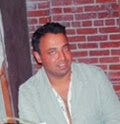Trailblazing Transformation: Discover the Success Story Behind Katy Industries’ Transition to American Plastics
The U.S. plastics market is worth more than $90 billion today. By the end of the 2020s, it’s expected to comfortably exceed $100 billion in value.
Yet most Americans can’t name a single plastics manufacturer. Unless you work in the industry (or in a related field, like petrochemicals), you don’t think much about where we get the everyday plastic products we depend on for our comfort, convenience, prosperity, and good health.
One big reason why: the plastics manufacturing business is highly fragmented. With all due respect to their capable workforces, there are literally dozens of plastics companies that do more or less the same thing. Most plastic products are not immediately recognizable in the way that, say, an iPhone is. They’re commodities.
Standing Out in a Crowded, Competitive Marketplace
That means plastics manufacturing is a tough, competitive business. Many plastics companies have trouble standing out in the marketplace, sometimes with existential consequences. That’s the situation a company called Katy Industries found itself in back in 2016 and 2017, just as I joined the Highview Capital team.
Facing severe operational difficulties and eroding market share, St. Louis-based Katy Industries found itself with no choice but to declare bankruptcy and look for a buyer. Often in these situations, the only buyers that show up aren’t particularly interested in preserving the company as a going concern. Instead, they suss out its most valuable parts to sell piecemeal or combine as “value-adds” into companies that they already own in the same industry or supply chain.
Highview took a different approach. Its goal wasn’t to strip Katy for parts, but rather to rebrand and reposition it as a market leader in the plastics segments where it had the potential to excel. We wanted to build a stronger, more resilient company instead of tearing it down.
Sparking a Renaissance in America’s Manufacturing Heartland
Continuity was a critical element of the plan. At the time, the company had several well-established brands that existing customers knew and trusted: Continental Commercial Products, Contico, Wilen, Fundamentals and Fort Wayne Plastics. The company manufactured a diverse array of injection-molded, structural foam, and other plastic-based products for commercial and consumer use, including storage containers, cleaning supplies, housewares, foodservice equipment and supplies, and modular components. It had a reputation for quality and reliability — a rare thing in a commodity business.
Just as importantly, the company now known as American Plastics had a sizable employment base spread across three time zones. Its main manufacturing facilities were located in western Ohio, northern Indiana, and east-central Missouri. It had distribution hubs in Ontario and southern California. More than 300 families depended on American Plastics for their livelihoods.
So we made the decision to double down on American Plastics’ strengths and give it the best possible chance of post-bankruptcy success. Major aspects of this effort included an external executive recruiting campaign to bring fresh talent and insight into upper management, a focused geographical expansion that significantly expanded the company’s manufacturing capabilities and reach, and an innovative financing strategy that fueled American Plastics’ expansion without overloading its balance sheet.
Within two years, American Plastics’ Ohio manufacturing hub expanded from fewer than 30 employees to more than 150, adding about 140 good-paying, small-town jobs in the process while absorbing two well-regarded competitors (Creative Plastics Concepts and Centrex Plastics). Within four years, its sales jumped from $160 million to more than $450 million. Within six, its facility count roughly doubled, to 14 and counting.
Six Years on, a Big Milestone
No corporate turnaround is easy, but American Plastics’ resurgence was particularly gratifying given the immense challenges that pushed its predecessor into bankruptcy.
The Highview team’s efforts paid off in 2022, when it sold a revitalized American Plastics to a new owner. It was a bittersweet moment for those of us who helped see the turnaround through to completion. But it also was incredibly gratifying to see the company in a far stronger position than before.
